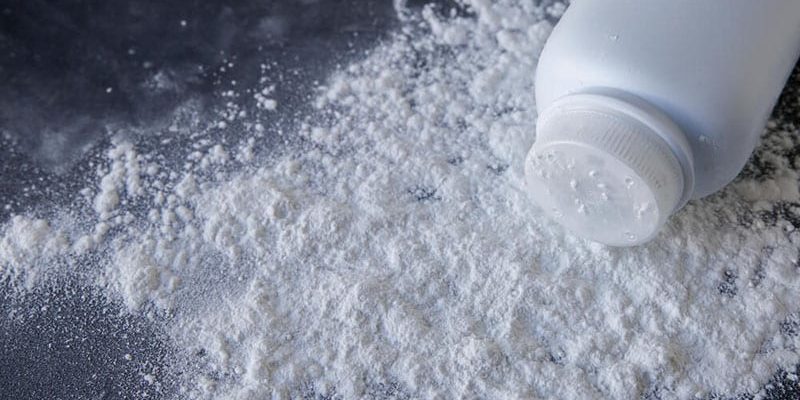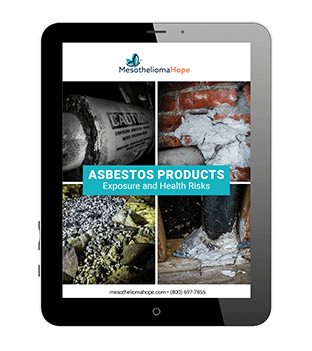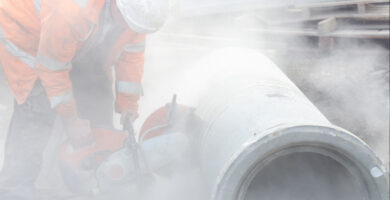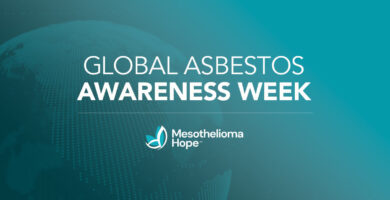A 2018 Reuters report claims that Johnson & Johnson, one of the world’s leading baby powder manufacturers, hid the truth about asbestos lurking in its talc. A series of recent lawsuits against the company also sided with plaintiffs, who claim the company’s baby powder caused their cancer. These events caused the company’s stock to plummet by 10% in late 2018—a nearly $40 billion loss.
The report revealed that, according to legally released company documents, Johnson & Johnson’s baby powder has sometimes tested positive for trace amounts of asbestos. The problem persisted from 1971 to the early 2000s.
Johnson & Johnson’s baby powder is considered to be one of its most famous products. Mothers have been using the powder on their babies and themselves since it hit the shelves in 1893. The report describes the company as the leader in the talc powder market, outperforming all of its competitors.
Allegations and Cover-Ups
The report claims that doctors, lawyers, mine owners, scientists and company managers associated with Johnson & Johnson knew that the powders contained asbestos, but never informed the public about the health risks.
Additionally, it states that representatives for Johnson & Johnson took active steps to downplay the risks of asbestos in their products.
Documents cited in the report reveal that Johnson & Johnson told the FDA that samples of its baby powder contained no asbestos in the mid-1970s. However, analyses from different labs and doctors found trace amounts of asbestos in the powder in some cases and “rather high” amounts in other tests.
Instead of reporting all studies, Johnson & Johnson’s team only submitted ones that concluded their baby powder did not contain asbestos to the FDA, the Reuters team claims.
This withholding of information caused a New Jersey judge to affirm a verdict that Johnson & Johnson’s products contained cancer-causing asbestos.
Additionally, according to an analysis of memos and reports, Johnson & Johnson’s team also influenced data and reports on the safety of talc in the 1970s. This included advising government researchers through subsidiary companies and conducting their own research.
Documents analyzed by the report reveal that traces of tremolite—a naturally-occurring form of asbestos—were first detected in samples of Johnson & Johnson’s talc in the late 1950s. Tremolite often is found in deposits of talc, a key ingredient in baby powder.
Johnson & Johnson disputes that this tremolite was not a form of asbestos. However, a 2008 email from their talc supplier’s product safety director said otherwise. The email stated that talc deposits with non-asbestiform tremolite contain asbestiform tremolite as well.
Johnson & Johnson sourced their talc from different locations throughout the world, including mines in Italy, Vermont and currently China. Studies found trace amounts of minerals that naturally occur as asbestos in the talc from the Italy and Vermont locations.
Studies continued to indicate trace amounts of asbestos throughout the decades. Numerous studies found asbestos fibers in samples of talc from 1984 to 2003.
This included the 1992 discovery of asbestos in the Hammondsville ore deposit in Vermont, which was the company’s main source of baby powder talc for over 20 years.
Recent lawsuits sided with plaintiffs in New Jersey, California and St. Louis who alleged that exposure to Johnson & Johnson’s baby powder caused their cancer. In addition to mesothelioma, plaintiffs also claimed that the use of Johnson & Johnson’s baby powder caused them or their loved ones to develop ovarian cancer.
In the St. Louis case, nearly $4.7 billion was awarded to 22 women in mid-2018 when a jury agreed that the powder caused ovarian cancer. According to a report by CBS News, over 9,000 women have sued the company for causing their ovarian cancer.
However, not all lawsuits have had the same result. Several court cases brought against Johnson & Johnson have rejected the claims or failed to make an adequate decision.
Johnson & Johnson’s Response and Ongoing Questions
Johnson & Johnson denies that their products contained asbestos, calling the report one-sided, unfair and false. According to the report, the company plans to appeal the verdicts.
In 2003, Johnson & Johnson transitioned their talc source to China through a supplier company. It continues to use talc in its baby powder to this day, though in 1980 it introduced an all-cornstarch alternative.
A spokesperson for the supplier says that tests indicate the Chinese-sourced talc is safe for use. At this time, there have been no announced plans for a recall of any Johnson & Johnson products, including baby powder.










